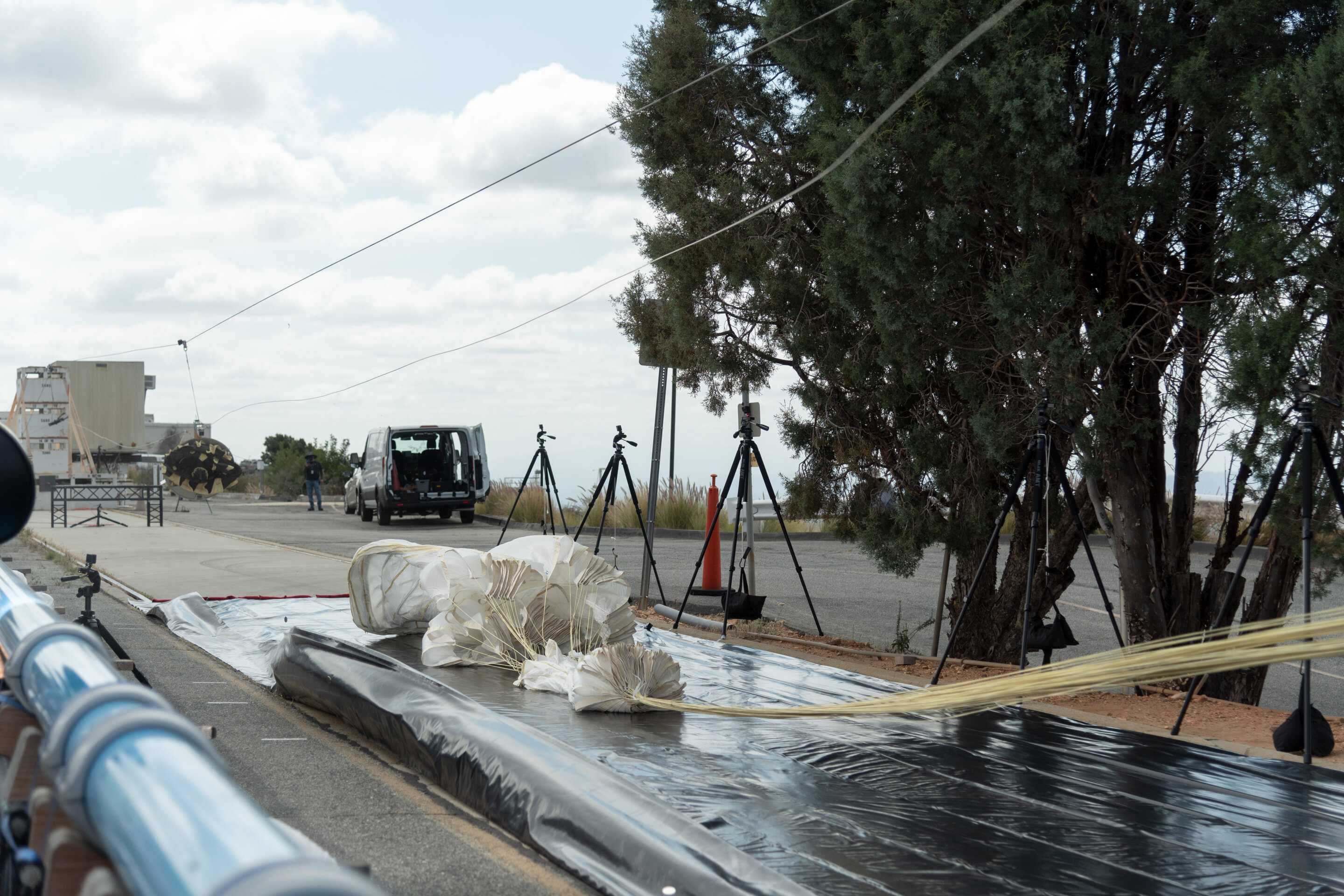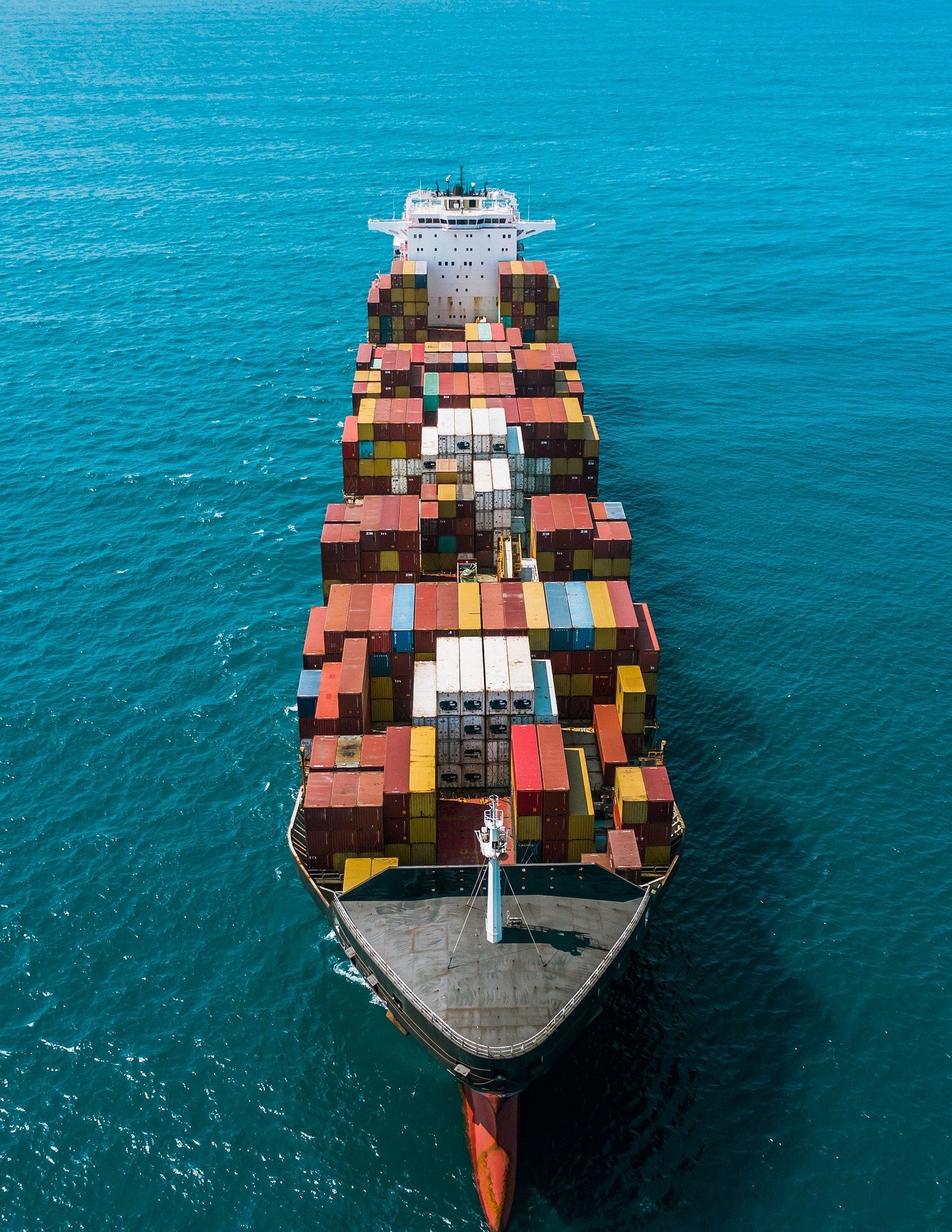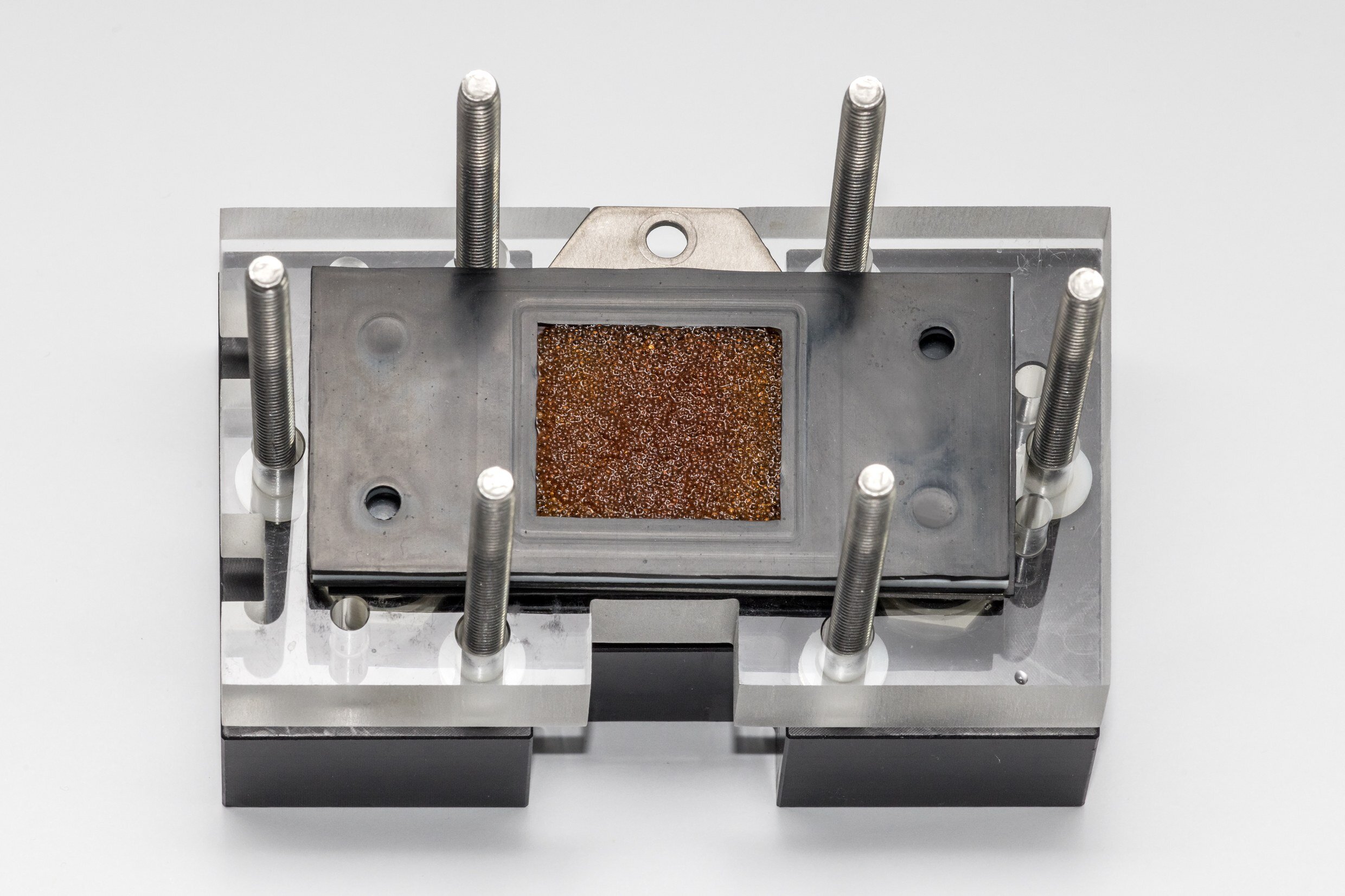#New ExoMars parachute ready for high altitude drop

“#New ExoMars parachute ready for high altitude drop”

A series of ground-based high-speed extraction tests confirm the readiness of a new and upgraded parachute and bag system for a high-altitude drop test in early June, part of critical preparations to keep the ExoMars 2022 mission on track for its next launch window.
The tests, conducted with NASA/JPL’s dynamic extraction test rig in California, U.S., focused on demonstrating the readiness of new equipment developed by Airborne Systems, as well as verifying changes to the parachute and bag provided by Arescosmo.
The ESA-Roscosmos ExoMars mission, with the Rosalind Franklin rover and Kazachok surface platform contained in a descent module, requires two main parachutes—each with its own pilot chute for extraction—to help slow it down as it plunges through the martian atmosphere. The 15 m-wide first stage main parachute will open while the descent module is still traveling at supersonic speeds, and the 35 m-wide second stage main parachute is deployed once at subsonic speeds.
The latest round of extraction tests focused on the first main parachute provided by both companies. Arescosmo addressed open issues from previous unsuccessful tests: a new bag design and a revised approach to folding to avoid line-twisting upon extraction. The Airborne Systems parachute and bag also completed several rounds of development tests to validate the extraction process.
“Both performed very well in the tests,” says Thierry Blancquaert, ESA ExoMars program team leader. “Close inspection showed that a few small areas in the parachute canopy had been subject to friction during the bag extraction process, reducing the strength of the fabric in these few places. Cross-examination with the video footage allowed the Airborne Systems team to pinpoint the moment the damage occurred and make modifications to the bag and packing of the parachute. This could be done with a remarkably quick turnaround of just a couple of days, to arrive at a successful result.”
The parachute had originally been packed inside the bag around the central mortar that contains the pilot chute, such that upon extraction it unwrapped in a 360º fashion. Folding the band of the parachute in two layers, so that it first unfolds in one direction and then 180º in the other direction, proved to reduce the tendency of the canopy to experience friction incurred by wrapping around the mortar.
The Airborne Systems first main parachute will now move forward for testing in its first high-altitude drop test scheduled at the start of June from Kiruna, Sweden.Two high-altitude balloons and dummy descent modules are available in the June window, which will see the descent vehicle dropped under the parachute from a stratospheric balloon at an altitude of about 29 km.
For Arescosmos, the first main parachute will act as a back-up, and instead the focus for them will turn to the second main parachute. Upgrades made to this parachute and bag were already implemented and tested in dynamic extraction tests in December 2020, which included using stronger parachute lines and reinforced material around the parachute apex. For the upcoming high-altitude test, a slightly smaller sized pilot chute (3.7 m compared with 4.5 m previously) will also be implemented, aimed at reducing the energy—and therefore the friction—generated upon extraction of the second main parachute from its bag. This cannot be tested on the ground-based rig in advance, which is only focused on the main parachute extraction from its bag.
Further ground-based dynamic extraction test slots are anticipated during August to prepare for another pair of high-altitude drop tests foreseen for October/November this year, from Oregon, U.S.. Further high-altitude test opportunities are also considered during the first half of 2022. Subsequent test configurations will largely depend on the outcome of the upcoming tests in Kiruna, although it is expected to repeat successful tests at least once more.
High-altitude drop tests require complex logistics and strict weather conditions, making them difficult to schedule, while the ground tests can be repeated on a quick turnaround, buying significantly more time in the test campaign and reducing risk by allowing more tests to be conducted on a short time frame.
“Our strategy of having two highly qualified teams working on the parachutes, together with the availability of the ground-test rig, is already paying off and we are ready and looking forward to the next high-altitude drop tests,” says Thierry. “Landing safely on Mars is a notoriously difficult task. Investing our efforts in this test strategy is an essential part of ensuring a successful mission when we arrive at Mars in 2023.”
ExoMars parachute testing moves forward
Citation:
New ExoMars parachute ready for high altitude drop (2021, May 21)
retrieved 21 May 2021
from https://phys.org/news/2021-05-exomars-parachute-ready-high-altitude.html
This document is subject to copyright. Apart from any fair dealing for the purpose of private study or research, no
part may be reproduced without the written permission. The content is provided for information purposes only.
If you liked the article, do not forget to share it with your friends. Follow us on Google News too, click on the star and choose us from your favorites.
For forums sites go to Forum.BuradaBiliyorum.Com
If you want to read more Like this articles, you can visit our Science category.




